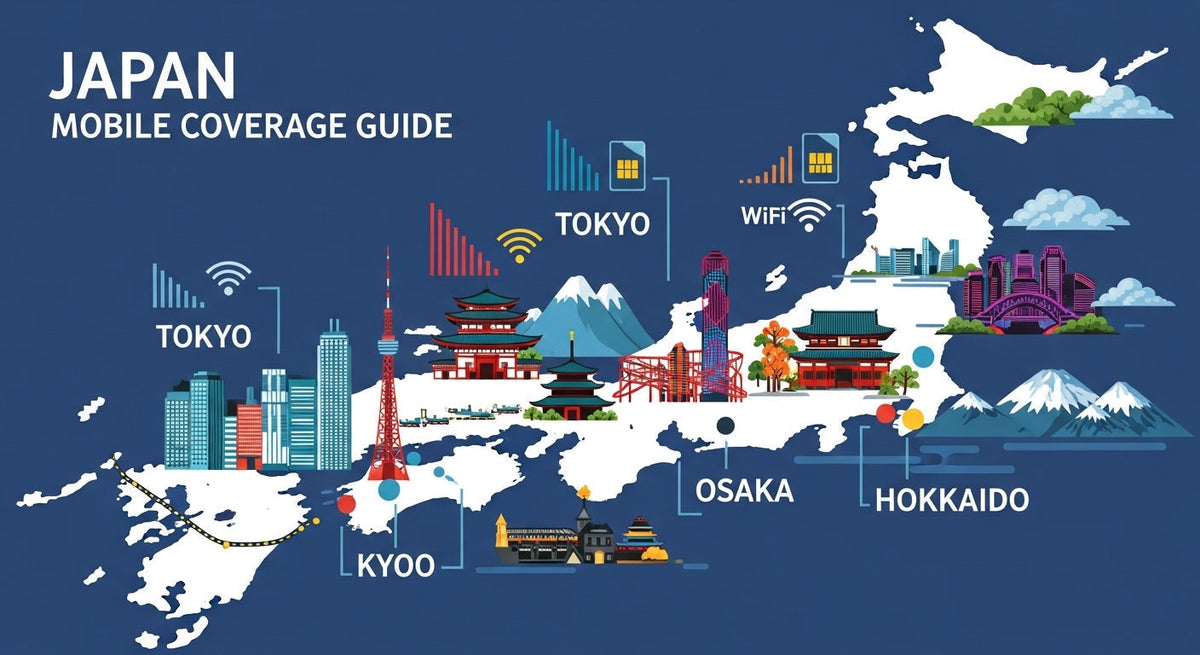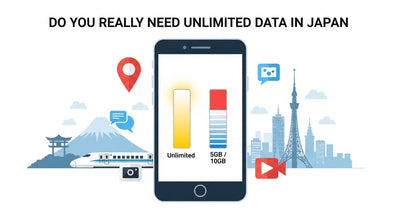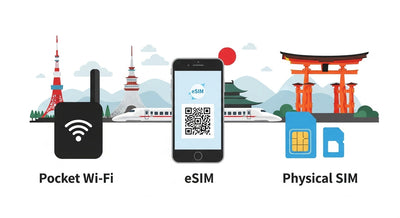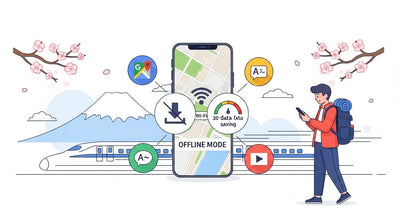Stay connected by understanding the “patterns” of weak spots and using a few simple habits on the go.
Why plan for connectivity?
Great routes can feel frustrating when uploads crawl or maps won’t refresh. The good news: subways, deep indoor spaces, high floors, and mountain valleys behave predictably. A few preps and quick routines go a long way.
City vs. regional areas
- Cities: many cells but congestion at peak times.
- Regions: fewer crowds but longer stretches with thinner coverage.
- Common rule: move to open areas. Offline maps are your safety net.
Tokyo
- Subways: tunnels are weaker. Re‑attach on platforms (Airplane ON→OFF).
- High floors: uplink drops at observation decks. Post photos on Wi‑Fi.
- Bayside: open spaces stabilize signal.
Kyoto
- Temples: deep wooden halls attenuate. Re‑attach near entrances.
- Hills: valleys weaken signal. Download maps ahead of time.
- Peaks: mornings and evenings can slow down. Disable auto‑play.
Osaka
- Downtown: speed varies by time. Use store Wi‑Fi when handy.
- USJ: weekend peaks affect upload. Delay posting video.
Hokkaido
- Mountains: thinner coverage. Offline maps are essential.
- Eastern Hokkaido: re‑connect at rest areas during long drives.
- Winter: cold drains batteries. Use low‑power mode.
One‑minute recovery routine
-
Airplane ON→10s→OFF
-
Step to an open spot or near entrances
-
Toggle eSIM line off/on
-
Cap video quality and restrict background data
How much data?
- 3‑day light: 2–3 GB
- 7‑day standard: 5–7 GB
- 14‑day heavy social: 10–15 GB
Make Your Japan Trip: Save Smart. Connect Fast.
The real strength of JP-SIM.com is not only its simplicity and convenience, but also its outstanding affordability compared to other options.
No more waiting in long airport lines for a SIM card or carrying a heavy pocket Wi-Fi. With JP-SIM, you can purchase online before departure, scan the QR code, and get connected the moment you land in Japan.
JP-SIM is significantly cheaper than roaming and many competitor services, while still offering flexible plans that match your travel days and data needs. Powered by Japan’s major carrier networks, it provides reliable high-speed coverage across the country—from Tokyo and Kyoto to Hokkaido and rural areas. And with 24/7 multilingual support, even first-time visitors can travel with confidence.



